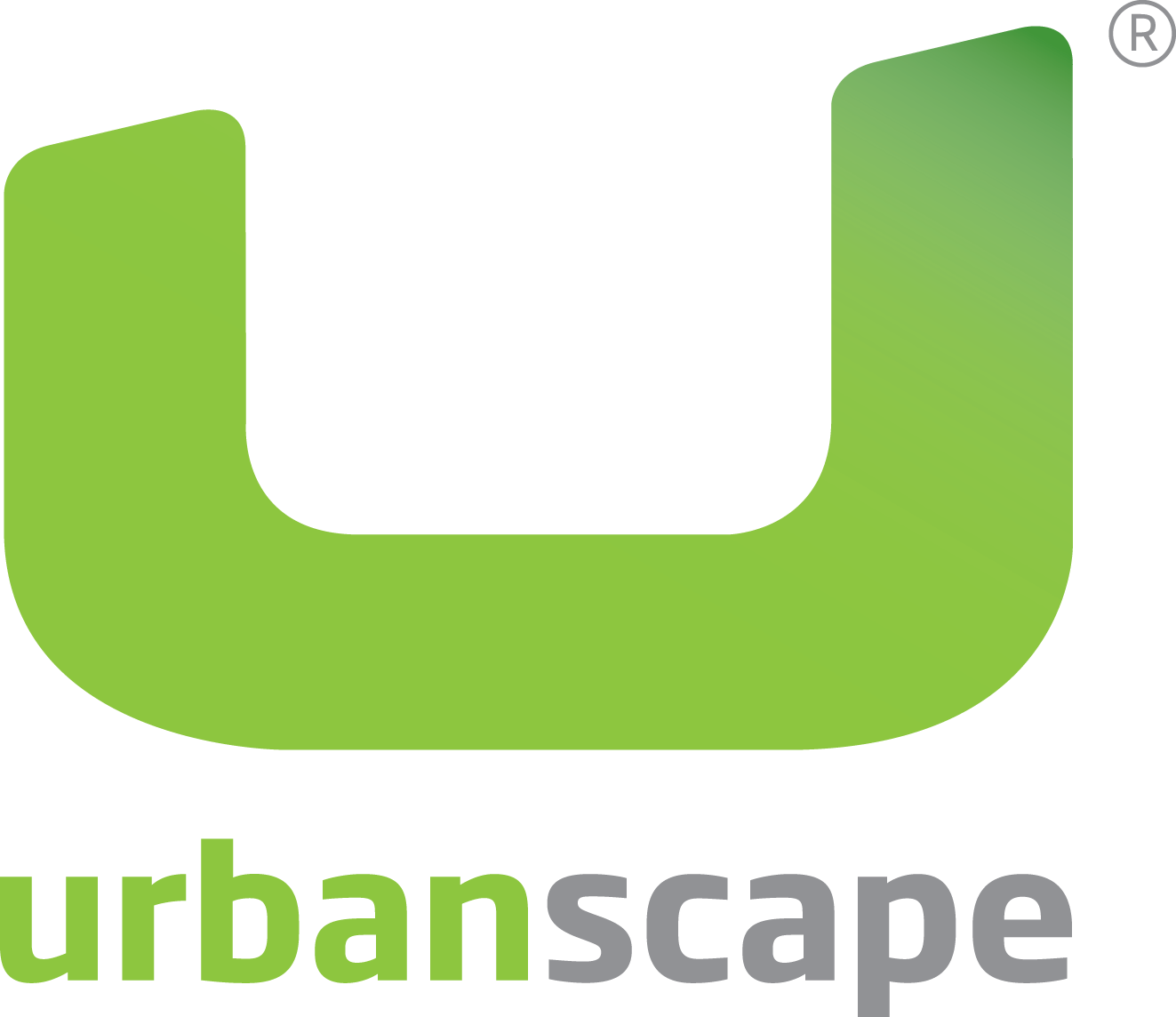WHY BUSINESSES SHOULD BE INTERESTED IN GETTING THEM?
Green infrastructure is far from being just a trendy addition to business facilities. The rational advantages of this technology represent an investment to the future of your company and the environment you and your employees inhabit.
The following article presents a brief overview of economic, practical and environmental reasons for the introduction of green roofs to your storage facilities, office buildings, workshops and other buildings your business requires. We will also address the topic of climate change and environmental legislation, that is currently relevant to business owners anywhere in the developed world.
Economic reasons — Reducing heating and cooling costs
The consequences of global warming have also made their way into businesses. Reducing cooling costs is an ever more pressing issue with frequent heatwaves and extreme warm weather phenomenons — even in Europe. It can also pose a health hazard for your employees.
The way green roofs can help overcome those problems is both in the insulation properties of the system and in its ability to retain a much lower surface temperature than traditional roofing. Exactly how much impact installing a green roof will have on your cooling and heating costs depends on the climate conditions of the area in question. To determine the impact in specific countries and cities, we compare the thermo-hydrologial performance of the roof in question to the optimal green roof design and conditions.
Urbanscape has conducted various case studies to determine just how efficient the Urbanscape Green Roof System is in various different areas, and all the data and sample project reports can be accessed here.
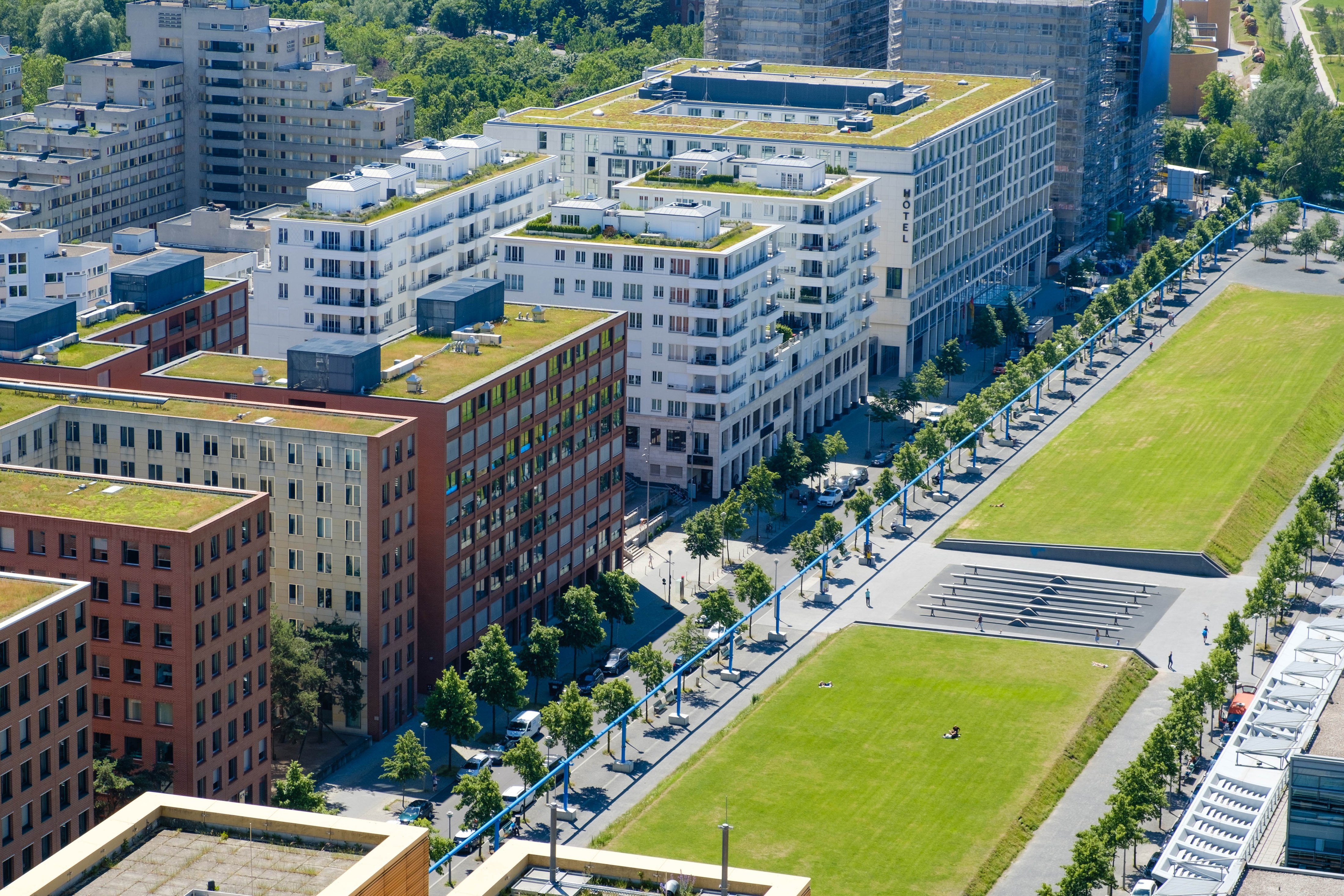
Catching the tide — Legislation favours green roofs
Research shows a 10% increase in green cover could reduce the projected increase in urban temperatures from global warming. Knowing this, governments are gradually being stirred into action.
France has passed legislation that commercial buildings must be partially covered by either green roofs or solar panels in march 2015. In Copenhagen (Denmark) green roofs have been mandatory on all new roofs with a pitch under 30 degrees since 2010, setting the example that many other European countries may follow in the future.
Canadians warmed to the idea of green roofs even earlier — Toronto adopted a by-law in 2009 mandating green roofs to be installed on both industrial and residential buildings. In Australia, the peak body for landscape architects has stepped up calls for local governments to make green roofs compulsory on new commercial buildings for the environmental benefit of cities. In Singapore as well, the legislation dictates that every contractor/builder needs to fully compensate for any land degradation that results from a building project with real vegetated areas. Singapore is working to solve this with green roofs, green facades, green parking spaces, etc.
Regarding this data it is clear that legislation in the developed world is moving in the general direction of favouring green roofs in all commercial buildings, which is a clear sign for all future development projects.
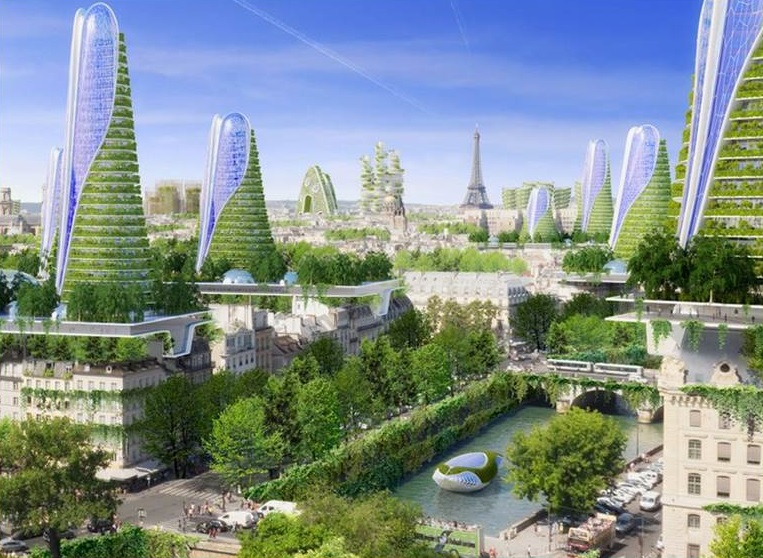
Fighting climate change now will save more money in the long run
Climate adaptation programs are no longer only a concern for sustainability officers — they are now regarded as a matter of risk management and a long term planning exercise that should encompass various parts of businesses and organisations. According to the findings of the reputable University of Melbourne, investing in infrastructure for risk prevention is more effective than dealing with the consequences later.
Health, energy consumption, transport, infrastructure, agriculture and other natural resources are all affected when dealing with changing weather phenomenons and pollution, which urges us to become more proactive when it comes to dealing with climate change. Industrial and corporate infrastructure can provide to the reduction of these problems.
To quote the Australian study: »Over the past decade, the Victorian Government has spent more than A$4 billion on response and recovery to bushfires, floods, droughts and heatwaves. On top of that public money, there is also the private financial cost to industries, communities and individuals — not to mention the emotional and mental impact of these events.«
Such events are becoming much more common in Europe as well, which means it is time to act upon the trends that are clearly evolving when it comes to changing climates and the costs connected to them.
Environmental impact
According to trends, the bar for meeting the usual standards for environmental permits may be set higher in the future due to the worsening climate, with more and more requirements also directed towards additional active approaches to ensuring less environmental stress.The worlds' leading municipalities, such as London, Munich, Basel and Rotterdam, have already adopted green roof policies to fight dust particle pollution.
Green roofs and other green infrastructure can help ease many of the effects of industry on the environment. If you are a business that uses warehouse facilities or any kind of buildings that cover large areas, it is possible to turn the roofs into air-cleaning surfaces that have great CO2 absorption properties.
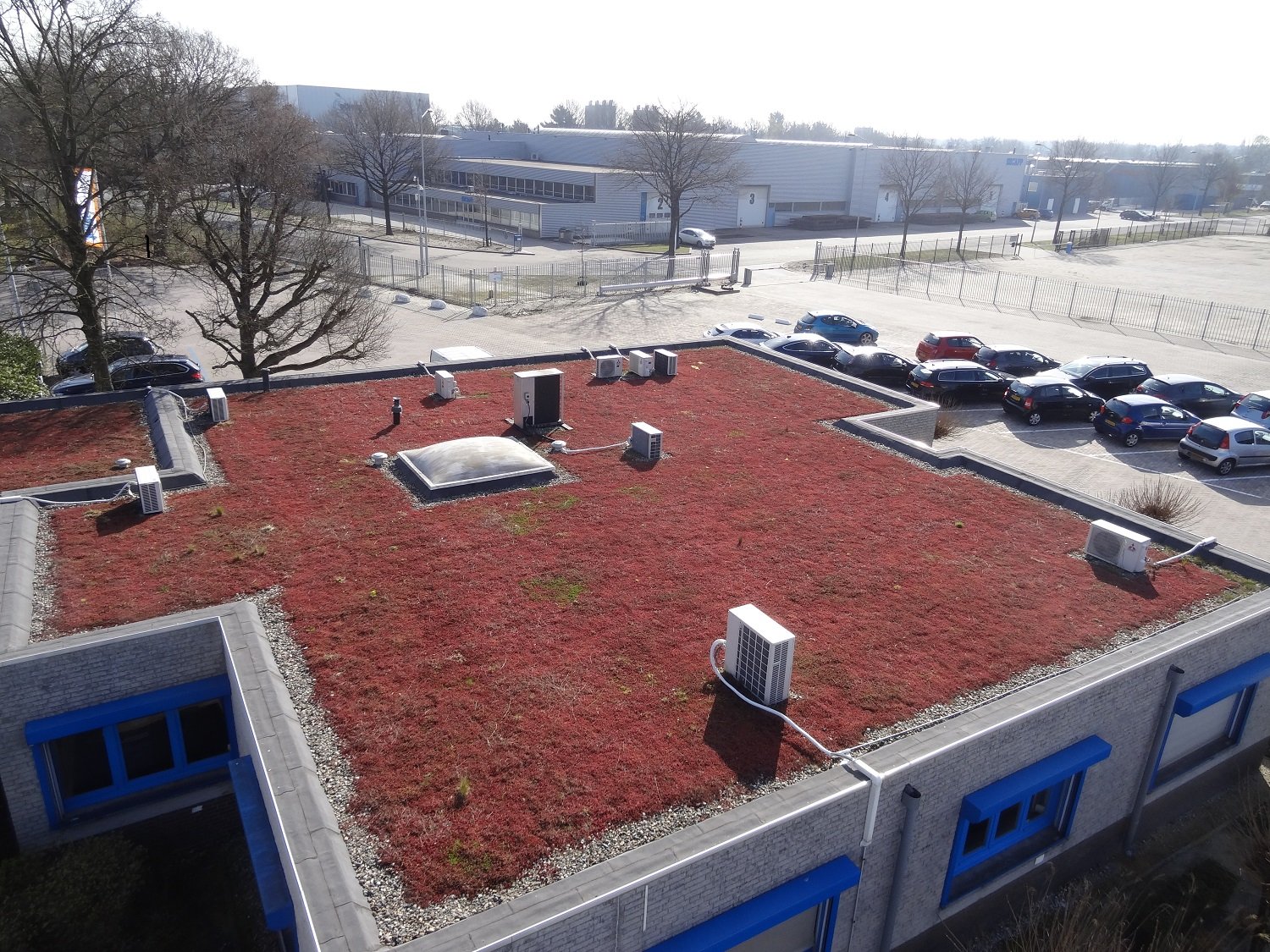
How to adopt green infrastructure?
It is possible to implement green technologies into any existing commercial environment, yet best way to ensure your bussiness benefits from incorporating green infrastructure is by incorporating it into long term development and risk prevention strategies, making sure that the technology you choose to implement reaches the best results. This will also ensure the best return on your investment.
Urbanscape® Green Roof System - a complete and lightweight solution.
The products from our Urbanscape Green Roof line are designed in a way that allows them to be easely installed both in the case of new facilities and existing corporate buildings. The system's light weight – about eight to ten times less than traditional green roof systems – makes it ideal when dealing with renovations and older building updates.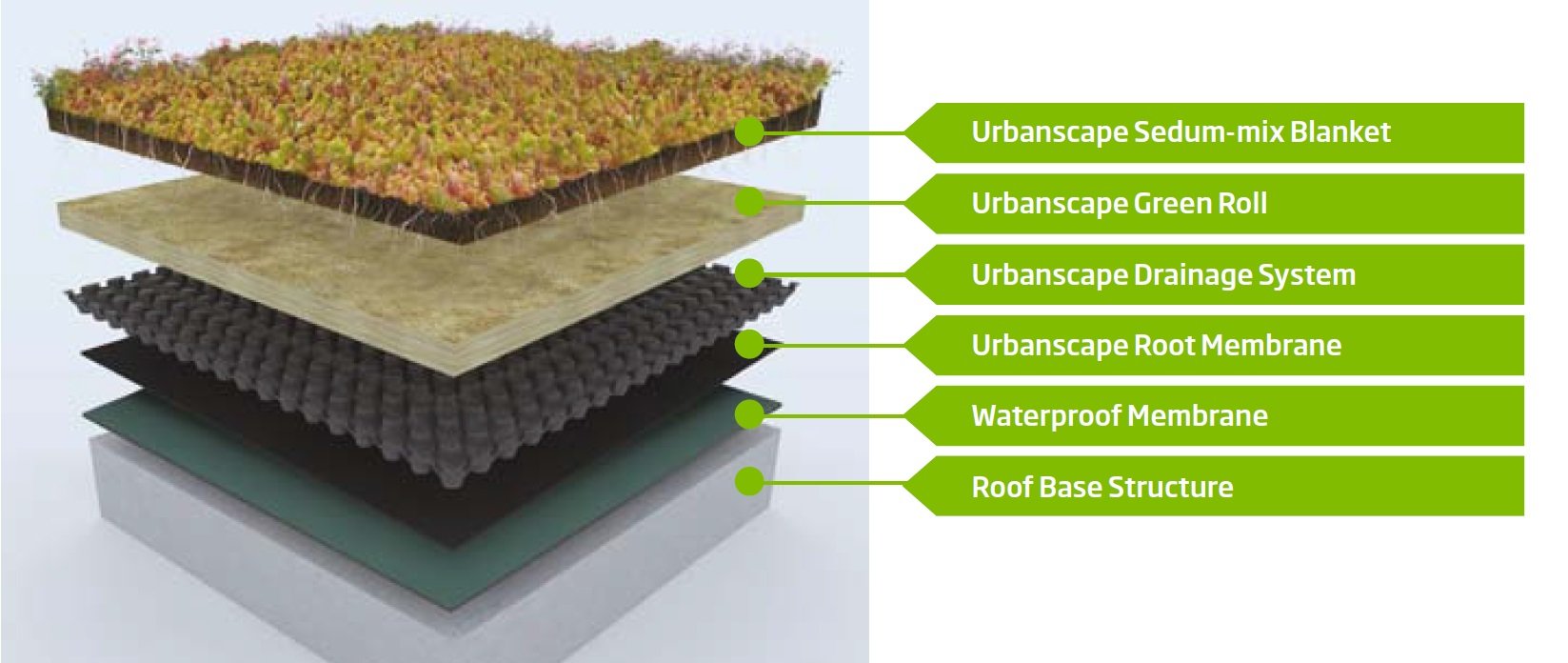
Get more information about the Urbanscape Green Roof System on our website or in our Green Roof System Brochure:
Author: Ana Belčič, M. Arch. - Studio MIAO
Sources:
Toronto makes green roofs the law, approves contravercial bike lanes – Lloyd Alter, 2009
France mandates green roofs for all new commercial construction – Katie Gloede, 2015
Using green roofs to reduce heat islands – United States Environmental Protection Agency
https://www.epa.gov/heat-islands/using-green-roofs-reduce-heat-islands
Temperature effects on health - current findings and future implications - Alexandra Schneider and Susanne Breitner, 2016
https://www.ncbi.nlm.nih.gov/pmc/articles/PMC4856774/
Spending wisely now will make heatwaves less costly later — University of Melbourne, 2014
Rod Keenan, Professor and Director, Victorian Centre for Climate Change Adaptation Research, University of Melbourne, Benjamin Preston, Visiting fellow, Victorian Centre for Climate Change Adaptation Research, University of Melbourne
Urbanscape green roof performance evaluation report
http://info.green-urbanscape.com/download-free-greenroof-performance-evaluation-report
